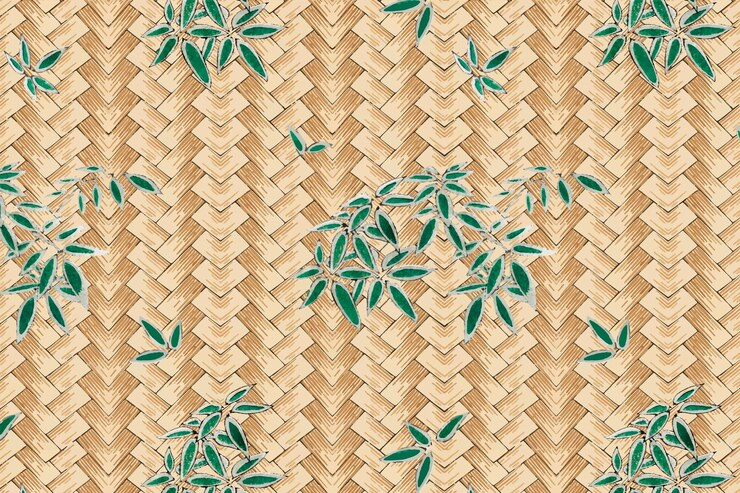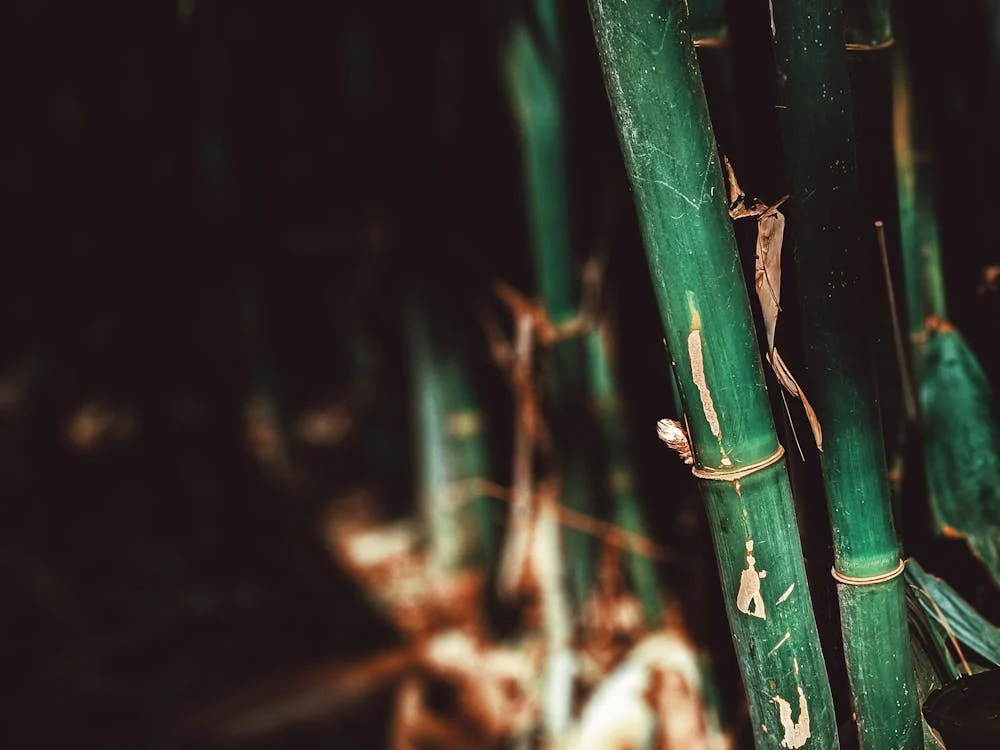Bamboo fabric, hailed for its eco-accommodating characteristics and lavish surface, has filled in prevalence as a reasonable substitute in the material business lately. Be that as it may, in the midst of all the green fuss, concerns have been raised concerning bamboo texture’s genuine maintainability. Is it truly as green as it appears, or are there implicit subtleties that need further examination? We dive into the intricacies of bamboo texture creation, its consequences for the climate, and its importance in chasing a greener future in this broad examination.
Bamboo surface is a type of material made from squeezing bamboo grass. Known for its sensitivity, strength, and ease of maintenance, it has become a preferred option in the eco-conscious fabric sector. The transformation of bamboo into fabric can be categorized into two primary techniques: mechanical processing and chemical processing.

Mechanically preparing bamboo involves crushing the cellulose in the bamboo plant and using proteins to break the bamboo walls into a soft mass. The regular threads are carefully brushed and twisted into yarn. This process is environmentally friendly and preserves the natural structure of bamboo, resulting in a fabric often called bamboo material. However, the method is very labor-intensive and difficult, and results in less product than the alternative process, making bamboo material rarer in the market.
Making bamboo fabric involves using chemicals to change the bamboo into liquid. The strategy is transformed into threads using spinnerets and then woven into fabric. The primary sort of bamboo texture made with this strategy is called bamboo rayon (or thick from bamboo). It has a few properties of bamboo however, it has a few issues due to the synthetics utilized.
Bamboo fabric comes in various sorts, each with its own unique highlights and creation procedures. The allure of bamboo lies in its delicate, solid, and eco-accommodating characteristics. Here are the various sorts of bamboo fabric that are ordinarily tracked down in nature:
Bamboo rayon is a kind of texture produced using bamboo material. It is the main sort of texture to be produced using bamboo. Synthetic substances are utilized with a created device to pound bamboo and convert it into a thick fluid.
This plan is changed into strings that can be woven into the material. Bamboo rayon is known for being an area of strength that is especially useful for eliminating dampness from the skin. In any case, the commonplace effect of the man-made synthetic compounds utilized in this cycle, for example, carbon disulfide, has caused stress. This has led to the development of more environmentally friendly ways to make the product.
Bamboo lyocell uses a closed-loop preparation that reuses nearly all the chemicals utilized. Further, bamboo mash is broken up in a non-toxic solvent, producing an arrangement that’s at that point spun into strands and texture.
This strategy is far more ecologically neighborly than the generation of conventional bamboo rayon. Bamboo lyocell holds the bamboo’s normal properties, counting delicate quality, breathability, and moisture-wicking capabilities while being more maintainable.
Known as bamboo bast fiber, the bamboo cloth is delivered through a mechanical handle without the utilization of chemicals. The bamboo stalks are pulverized, and characteristic chemicals are connected to break down the dividers into a soft mass, permitting the normal strands to be combed out and spun into yarn.
This handle is exceptionally labor-intensive and yields less texture than chemical strategies, making bamboo material less common and costly. Be that as it may, it is the foremost eco-friendly sort of bamboo texture, keeping up the normal surface of bamboo.
We frequently blend bamboo material with cotton to outwit the two materials. Bamboo has characteristics like being delicate, fending dampness off, and battling microbes, while cotton has major areas of strength and comfort. This texture is great for garments and bedding, advancing an extraordinary sensation of being genuine, comfortable, and reasonable.

Bamboo charcoal is blended into the texture during the making system to give it extraordinary properties. Also, bamboo charcoal can improve fabrics’ overall appeal, kill microorganisms, and eliminate dampness. Bamboo charcoal is often utilized in active clothes, socks, and materials to assist with controlling smell and keep things clean.
| Bamboo Types | Production | Chemicals Use? | Biodegradable? | Cost |
| Bamboo Linen | Mechanical | Yes | Yes | Expensive |
| Bamboo Rayon | Chemical | No | No | Cheap |
| Bamboo Modal | Chemical | No | No | Cheap |
| Bamboo Lyocell | Chemical | Yes | Yes | Expensive |
| Bamboo Blends | Chemical | No | No | Expensive |
Bamboo is celebrated for its fast development and negligible asset necessities. It can flourish in assorted climates and soil conditions, requiring less water, pesticides, and fertilizers than other crops like cotton. Bamboo moreover has the exceptional capacity to recover rapidly after collection, making it a profoundly renewable asset.
Whereas mechanical preparation of bamboo fabric is generally eco-friendly, chemical handling raises ruddy banners. A few chemical solvents utilised in bamboo fabric generation, such as sodium hydroxide and carbon disulfide, can hurt human well-being and the environment if they are not taken care of legitimately. Moreover, releasing wastewater containing these chemicals can contaminate conduits and biological systems.
Bamboo development regularly requires less arrival than other fiber crops, making it a more space-efficient choice. Be that as it may, concerns have been raised about developing bamboo manors into characteristic environments, possibly uprooting local vegetation and fauna. Feasible administration hones, such as agroforestry and biodiversity preservation, are fundamental to moderate these dangers.
The regular effect of bamboo fabric intensifies past turn of events and dealing with transportation and movement. Bamboo fabrics are oftentimes manufactured in districts with lower work and age costs, heading to significant distance transportation and related carbon radiations.
While bamboo’s speedy turn of events and carbon sequestration properties help adjust some of these spreads, transportation stays an idea inside the overall lifecycle examination.
To address concerns about the normal and social effects of bamboo fabric age, a couple of certificates and benchmarks have risen:
This certificate ensures that materials meet demanding measures for disastrous substances and synthetic developments, including those used in bamboo fabric taking care of.
GOTS accreditation guarantees that materials are produced using regular strands and made under normal and socially trustworthy circumstances. Though bamboo itself can be grown normally, achieving GOTS affirmation for bamboo fabric might be difficult because of the compound structures remembered for its age.
FSC confirmation affirms that bamboo is obtained from proficiently administered forests and estates, propelling biodiversity safeguarding and local area commitment.
Many people who care about the environment like to buy bamboo clothing. But it’s important to ensure the brand follows eco-friendly practices. To support the planet and its inhabitants, opt for brands that verify the source of their bamboo.
So, successful brands are usually very clear about where their stores are located. Don’t buy brands that are unclear about where they get their bamboo. Plus, improving quality: The brand should use trustworthy methods for making and collecting its products. and this could imply the importance of water conservation and efficient usage.
Be careful not to believe fake or not real “bamboo” claims. Search for brands specifically mentioning using Lyocell or a closed-loop system for sustainable impact.
Don’t buy products from brands that have unclear explanations about being “eco-friendly” with bamboo. So, seek out simple strategies for identifying high-quality products and filtering out low-quality ones.

Is bamboo fabric truly eco-friendly? The answer is nuanced. Though bamboo has various conservative characteristics. Such as counting quick turn of events, resource capability, and inexhaustible potential, its regular influence relies upon various factors, such as counting improvement sharpens, taking care of systems, and production network organization. Mechanical planning of bamboo surface offers a more eco-accommodating elective to compound getting ready, limiting essentialness use and synthetic use.
Nevertheless, compound planning stays prevalent inside the business, raising worries about tainting and resource depletion. Practical obtaining, age, and confirmation exercises have a crucial impact on ensuring the regular and social perception of the bamboo fabric. As clients, we have the control to drive demand for efficient materials and consider brands liable for their regular and moral sharpens. By picking bamboo fabric from genuine sources, supporting confirmation projects, and pushing for straightforwardness and obligation inside the material business, we are capable of adding to a more viable future for shape and the planet. Stay Tuned with us!
Bamboo viscose: This regular product uses bad chemicals like sodium hydroxide and carbon disulfide. Although it makes sense, it still brings up common concerns. Lyocell: This environmentally friendly choice uses a closed-loop system that reduces and reuses chemicals, which helps to minimize environmental impact.
Indeed, bamboo thrives with basically less water than cotton, which is particularly valuable in the dried locale. This deciphers to a lower regular impression.
Yes, The Lyocell handle uses a closed-loop system that reduces the use of harmful chemicals and allows for their reuse, reducing environmental impact. However, Lyocell fabric is not very common and often comes with a higher price.
The softness and smoothness of bamboo fibers make them feel gentle on the skin due to their rounded shape. This is a big decision for people with sensitive skin.
Indeed, Tiny spaces in the threads allow for excellent air circulation, keeping you cool and dry. Bamboo is really good at absorbing sweat, which makes it great for sports clothes.
Yes, Bamboo has natural germ-killing properties that stop bacteria from making you smell bad. This allows bamboo clothes to stay fresh for a long time, so you don’t need to wash them as often.